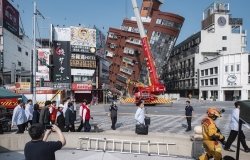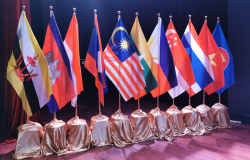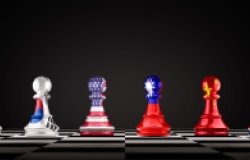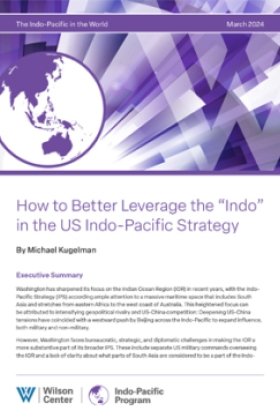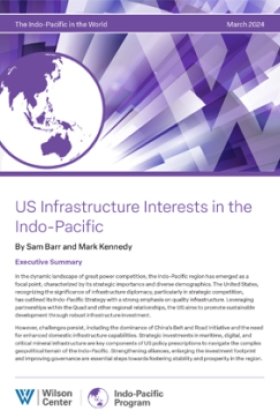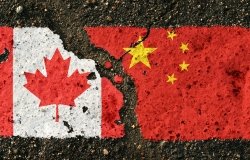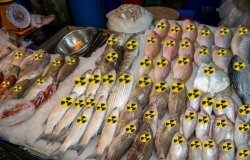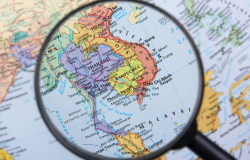Understanding North Korea
The Western world knows little about the leadership and political system of North Korea, a nation high on the world's radar. By disseminating newly obtained archival materials and conducting conferences, the Wilson Center's North Korea International Documentation Project works to help fill this informational void.
For years, North Korean issues of the highest priority have been on the world's radar, yet Western policymakers, scholars, and journalists lack vital information about North Korea's leadership and political system. North Korea sits on the list of state-sponsored terrorist countries while questions abound regarding its nuclear program, making it all the more vital and urgent to gauge its goals and motives. Yet, with no history of diplomatic relations with Pyongyang and little, if any, access to the country's elite, Americans have difficulty understanding and predicting North Korea's inscrutable actions.
To help fill this informational void, the Wilson Center's History and Public Policy Program recently launched an initiative called The North Korea International Documentation Project (NKIDP), supported by the Korea Foundation and other donors. In cooperation with the University of North Korean Studies based in Seoul and an international network of researchers, the NKIDP provides access to original and translated archival documents on North Korea, publishes a working paper series, regularly contributes to the Cold War International History Project Bulletin series, and holds conferences and workshops at the Wilson Center and throughout East Asia.
By conducting conferences and widely disseminating newly declassified documents on North Korea from its former communist allies and other resources, the NKIDP is informing scholars and policymakers to help them gauge the actions and nature of the North Korean state.
Document Collections
As historical materials are continually released by governments on all sides of the Cold War, CWIHP and NKIDP continue their work mining archives and translating newly declassified documents. Most of the documents relating to North Korea can be found in the Virtual Archive. In addition, CWIHP's Working Papers series offers analysis on critical issues based on extensive archival research. The latest working paper on North Korea, released last year by scholars Balasz Szalontai and Sergey Radchenko, utilizes Russian and Hungarian archival materials to chronicle North Korean efforts to acquire nuclear technology. Such efforts began in the 1950s with North Korea and South Korea each vying for an edge in its nuclear research, perpetuating Cold War rivalries among the Soviet Union, China, Eastern bloc nations, and the United States.
"From the 1950s on," wrote Szalontai, "both superpowers found it politically useful to give nuclear technology to their Third World allies in order to demonstrate their technological superiority and political generosity." In the early 1960s, as North Korea was constructing its research reactor, documents reveal North Korea became inspired by the model of nuclear self-reliance exhibited by China's program and the nuclear power plants then emerging in Eastern Europe. But despite Moscow's distrust of Pyongyang following the Sino-Soviet split, Radchenko's paper points to documents revealing that Soviet participation in North Korea's nuclear program only intensified.
Most recently, the NKIDP translated several new documents pertaining to North Korea's relations with its Cold War allies. Two recently acquired documents also highlight North Korea's attempts to acquire nuclear technology in the early 1960s. The Soviets had viewed the North Koreans as puppets of Beijing and feared the technology would be given directly to China if it was shared with Pyongyang. This illusion led to North Korea's distrust of its supposed "allies" throughout the Cold War.
In another recently acquired letter, North Korean Ambassador to the Soviet Union Li Sangjo had boldly called for more transparency and more democracy in the party, particularly in the appointment of officials to the Central Committee. In October 1956, Li had sent this letter directly to the leadership of the Korean Workers Party Central Committee after he was recalled from his Moscow post to Pyongyang following a failed attempt to force Kim Il Sung to amend the party leadership. Li initially delayed his return, then asked Soviet officials for asylum, knowing what fate awaited him if he returned to Pyongyang.
Not Just Nukes, But People Too
In July, the Asia Program sponsored an event to consider North Korean societal issues, from the status of women to the influence of South Korean culture. Wilson Center Public Policy Scholar Miryang Youn noted that even at the beginning of the North Korean regime, in the mid-1940s, Kim Il Sung made it a priority to "liberate" women by getting them out of the home and into the socialist workforce. North Korea passed a sex equality law in 1946, purportedly giving women full legal equality, including equal pay. During the Korean War, from 1950-53, while the men served on the battlefield, women worked to keep farms and factories running. However, after the war, as Kim Il Sung consolidated his political power, women's rights declined.
The subsequent model for North Korean women, to be loyal, obedient and compliant, continued for several decades. However, with the economic breakdown and widespread famine of the 1990s, the role of women changed. During that decade, said Youn, the women—not the men—foraged for food, peddled goods, and provided for the family. Today, women comprise 70 percent of the country's workforce, said Youn, who described North Korean women as resilient and integral to society.
Time reporter and Stanford fellow Donald Macintyre discussed media and entertainment. Based on his interviews with North Korean defectors in South Korea and North Korean traders and migrant workers in China, he said most admitted they were bored with North Korean entertainment, particularly movies and television shows, and were attracted to songs and movies from South Korea, albeit in pirated form. Inadvertently, the North Korean regime had started their attraction to South Korea. In the 1980s, the North Korean media had begun showing how "bad" people's lives were in the south. But, the North Korean viewing audience noticed the South Koreans appeared well dressed and their buildings looked sturdy. Also, as one woman told him, "When we saw demonstrations with South Korean people throwing bottles, we couldn't believe it. We would have kept the bottles!"
Macintyre said many North Koreans place emphasis on money and survival. Some are becoming fairly well off; many rely on the black market for food supplies, and the regime is aware of the trends. Anecdotally, Macintyre said one official Party document made available to him stated that cultural pollution was becoming a bigger threat to North Korea than U.S. military might.
Stuart Thorson, professor of political science at Syracuse, heads the only U.S. university collaborative project with a North Korean university, Kim Chaek University of Technology (KCUT) in Pyongyang. The collaborative project centers on information technology and has yielded a competitive digital library while a computer laboratory is underway. The project also established a multilateral regional scholars' exchange. A junior faculty leadership initiative is slated to begin this fall to bring young academics from North Korea to universities in the United States. He said 10 U.S.-based universities already have expressed interest in becoming part of the program.
Prospects for Regional Cooperation
At a Director's Forum in June, Ambassador Yim Sung-Joon, president of the Korea Foundation, shared his views on the prospects for regional cooperation in Northeast Asia, drawing from more than three decades of diplomatic experience throughout the continent.
Yim suggested that South Korea, China, and Japan should collaborate to tackle such urgent regional problems as transnational crime, territorial disputes, environmental issues, and the North Korea nuclear issue. He underscored dialogue and cooperative action and asserted the need to expand and diversify initiatives to include North Korea.
Addressing security concerns, Yim noted that Northeast Asia lacks an organization that can effectively prevent military confrontations between countries in the region. He spoke of the need to create a regional security structure resembling the North Atlantic Treaty Organization (NATO). He said South Korea is geographically well-positioned to facilitate strong multilateral relations among the countries of the region.
Related Programs

North Korea International Documentation Project
The North Korea International Documentation Project serves as an informational clearinghouse on North Korea for the scholarly and policymaking communities, disseminating documents on the DPRK from its former communist allies that provide valuable insight into the actions and nature of the North Korean state. It is part of the Wilson Center's History and Public Policy Program. Read more

Hyundai Motor-Korea Foundation Center for Korean History and Public Policy
The Center for Korean History and Public Policy was established in 2015 with the generous support of the Hyundai Motor Company and the Korea Foundation to provide a coherent, long-term platform for improving historical understanding of Korea and informing the public policy debate on the Korean peninsula in the United States and beyond. Read more
